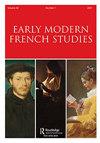Parisian Palimpsests and Creole Creations: Mme Marsan and Dlle Minette play Nina on the Caribbean Stage*
IF 0.2
3区 历史学
Q2 HISTORY
引用次数: 2
Abstract
This article compares the theatrical careers of two performers in the French colony of Saint-Domingue (present-day Haiti): Mme Marsan, a white European who dominated the public stage in 1780s Cap-Français, and a younger Creole woman of mixed racial ancestry, known as ‘Minette’, who performed in her home town of Port-au-Prince. Its focus is on performances of Marsollier and Dalayrac’s opéra-comique, Nina (1786), in which both women performed the lead role. Although Minette is usually regarded as a singer, it is argued here that, by electing to put on and star in Nina, she was taking on one of the most demanding acting roles in the repertoire. The article considers the self-positioning — and positioning by others — of both performers in relation to the metropolitan performance model and the possibility of creating creolized forms of theatre. While Mme Marsan acknowledged that she was playing a role previously performed successfully in Paris by Mme Dugazon, Minette’s approach was more complex: drawing on unacknowledged references to a review of Dugazon’s performance, Minette also invoked a common Creole background that she claimed to share with her local audience. The metropolitan ‘model’ was thus not always imitated; it was also used as inspiration for new, subtly creolized forms of theatre.巴黎复写和克里奥尔创作:马桑夫人和米内特夫人在加勒比舞台上扮演妮娜
这篇文章比较了法国殖民地圣多明各(今海地)的两位演员的戏剧生涯:1780年代在法兰西岛公共舞台上占据主导地位的欧洲白人马桑夫人和在家乡太子港表演的混血克里奥尔年轻女性“米内特”。它的重点是Marsollier和Dalayrac的歌剧《尼娜》(1786年)的表演,两位女性都在其中扮演主角。尽管米内特通常被认为是一名歌手,但这里有人认为,通过选择出演《尼娜》,她扮演了剧目中要求最高的表演角色之一。本文考虑了两位表演者在大都市表演模式中的自我定位和他人的定位,以及创造克里奥尔化戏剧形式的可能性。虽然马桑夫人承认她扮演的是杜加松夫人之前在巴黎成功表演的角色,但米内特的做法更为复杂:米内特引用了对杜加松表演的未经承认的评论,并援引了她声称与当地观众分享的常见克里奥尔背景。因此,大都市的“模式”并不总是被模仿;它也被用作新的、巧妙地克里奥尔化的戏剧形式的灵感来源。
本文章由计算机程序翻译,如有差异,请以英文原文为准。
求助全文
约1分钟内获得全文
求助全文
来源期刊

Early Modern French Studies
Multiple-
CiteScore
0.10
自引率
0.00%
发文量
14
期刊介绍:
Early Modern French Studies (formerly Seventeenth-Century French Studies) publishes high-quality, peer-reviewed, original articles in English and French on a broad range of literary, cultural, methodological, and theoretical topics relating to the study of early modern France. The journal has expanded its historical scope and now covers work on the sixteenth, seventeenth, and eighteenth centuries. Within this period of French literary and cultural history, the journal particularly welcomes work that relates to the term ''early modern'', as well as work that interrogates it. It continues to publish special issues devoted to particular topics (such as the highly successful 2014 special issue on the cultural history of fans) as well as individual submissions.
 求助内容:
求助内容: 应助结果提醒方式:
应助结果提醒方式:


